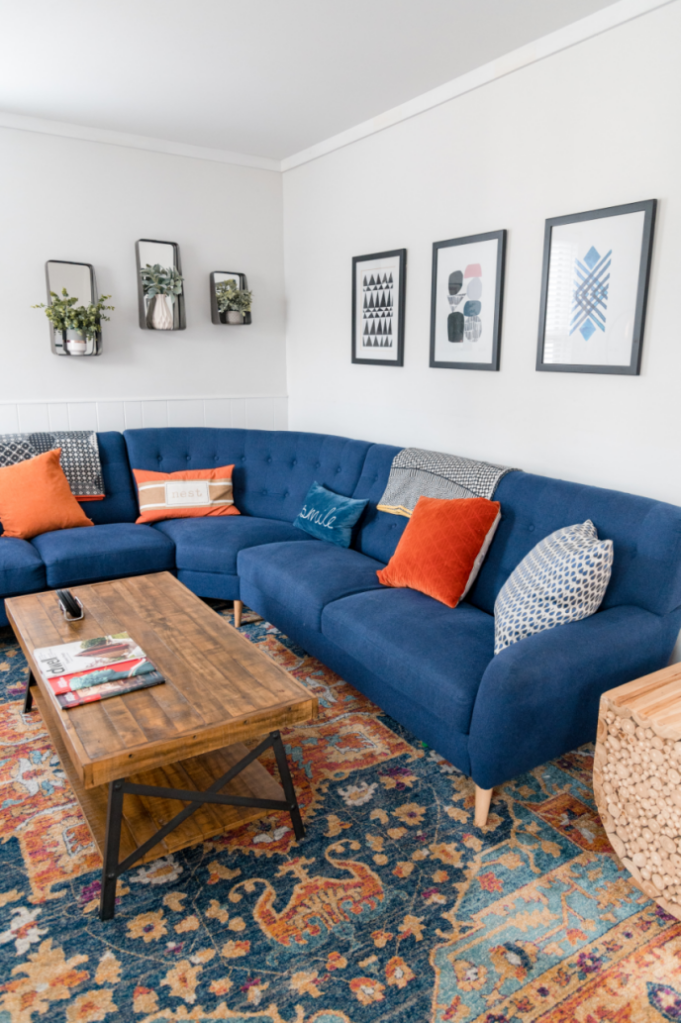
Color is one of the most powerful tools in interior design. It has the ability to transform a space, evoke emotions, and even influence behavior. Understanding color psychology is essential for creating harmonious and inviting interiors that cater to the needs and preferences of occupants. In this blog, we’ll delve into the fascinating world of color psychology and its application in interior design.
The Basics of Color Psychology

Color psychology is the study of how colors affect human behavior, emotions, and perceptions. Different colors can elicit various psychological and physiological responses, making them a crucial element in interior design. Here are some common associations with colors:
Red: Energizing, passionate, and attention-grabbing. Red can stimulate appetite and conversation, making it suitable for dining areas or social spaces.
Blue: Calming, tranquil, and often associated with productivity. Blue is ideal for bedrooms, offices, and spaces where relaxation or concentration is essential.
Yellow: Cheerful, optimistic, and warm. Yellow can create a welcoming and vibrant atmosphere in kitchens and living rooms.
Green: Refreshing, balanced, and reminiscent of nature. Green is perfect for spaces where relaxation and harmony are the focus, such as bedrooms or bathrooms.
Purple: Royal, luxurious, and creative. Purple can add a touch of sophistication to bedrooms or areas where inspiration and creativity are encouraged.
Orange: Energetic, enthusiastic, and sociable. Orange is great for spaces where interaction and enthusiasm are desired, like playrooms or home gyms.
Neutral Colors (e.g., beige, gray, white): Versatile and timeless, neutral colors can create a sense of balance and allow other elements in the room to shine. They’re often used as a backdrop in various interior styles.
Applying Color Psychology in Interior Design
Consider the Room’s Purpose: Start by identifying the primary function of the room. Is it a bedroom, a dining room, a home office, or a children’s play area? The room’s purpose should dictate the dominant color.

Create Balance: While it’s essential to choose a dominant color that aligns with the room’s purpose, consider using accent colors to create balance. For example, a predominantly blue bedroom can benefit from warm, complementary accents in shades of yellow or orange.

Mind the Light: Natural and artificial lighting can significantly affect how colors are perceived. Bright, well-lit rooms can handle deeper and more saturated colors, while rooms with limited light may benefit from lighter hues to appear more spacious.
Personalize with Accessories: You don’t have to repaint your entire space to incorporate color psychology. Accessories like throw pillows, artwork, rugs, and decorative items can introduce specific colors and moods into a room.

Stay True to Your Aesthetic: While color psychology provides valuable insights, it’s essential to align your color choices with your overall design aesthetic. Blend the psychological effects of colors with your personal style to create a space that feels uniquely yours.
Color psychology in interior design offers a creative and scientific approach to enhancing spaces and influencing emotions. By understanding the psychological effects of colors and applying them thoughtfully, you can create environments that cater to your needs, evoke desired emotions, and reflect your personal style. Whether you’re redesigning a single room or your entire home, harness the power of color to transform your space into a harmonious and inviting haven.
About Us
At 1ST Missing Piece, we specialise in offering unique, playful, and innovative furniture online. With a focus on artisan-crafted pieces from around the globe, our mission is to transform furniture shopping into an adventurous journey of discovery. Our extensive catalogue features a diverse selection of standout furniture pieces that add comfort, delight and style to any home or workspace. Beyond functionality, our handpicked furniture collection makes a bold statement, offering lasting impressions and superior quality that sets us apart in the competitive online furniture market.
